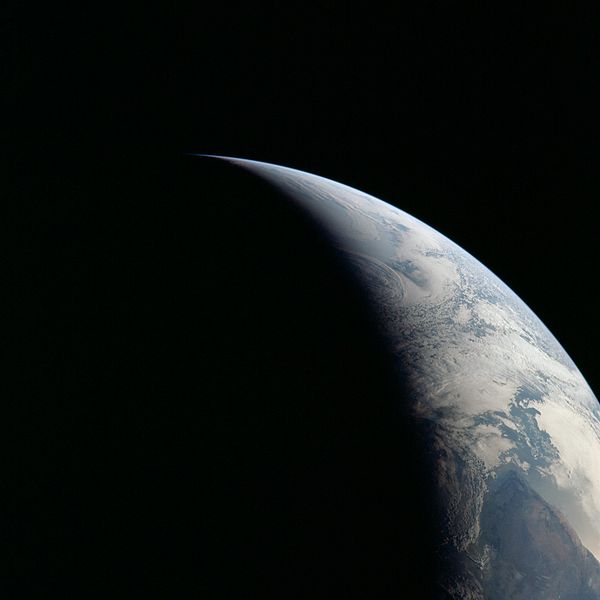A terminator or twilight zone is a moving line that divides the daylit side and the dark night side of a planetary body. The terminator is defined as the locus of points on a planet or moon where the line through the center of its parent star is tangent. An observer on the terminator of such an orbiting body with an atmosphere would experience twilight due to light scattering by particles in the gaseous layer.
Earth's terminator as seen from space
The transition from light to dark takes place on two fronts in this image of Mimas.
A photograph of part of the terminator crossing the surface of the Earth, as seen from the ISS. The terminator is diffuse and shows the gradual transition to darkness that is experienced as twilight on the surface.
Boznańska crater near the terminator on Mercury
Night or nighttime is the period of darkness when the Sun is below the horizon. The opposite of nighttime is daytime. Sunlight illuminates one side of the Earth, leaving the other in darkness. Earth's rotation causes the appearance of sunrise and sunset. Moonlight, airglow, starlight, and light pollution dimly illuminate night. The duration of day, night, and twilight varies depending on the time of year and the latitude. Night on other celestial bodies is affected by their rotation and orbital periods. The planets Mercury and Venus have much longer nights than Earth. On Venus, night lasts 120 Earth days. The Moon's rotation is tidally locked, rotating so that the near side of the Moon always faces Earth. Nightfall across the near the side of the Moon results in the lunar phases visible from Earth.
Night sky over a bog in Estonia, with light pollution visible on the horizon
The drainage basin of the Nile river and delta at night
Sunset on Mars
Nocturnal insects drawn to an artificial light








